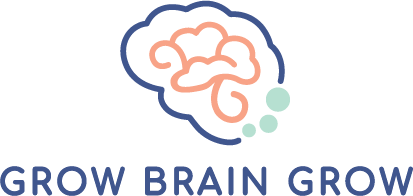One of the best ways to teach how to learn, grow and interact with themselves and their world is by teaching kids about the brain. Neuroscience is often viewed as the upper level of academics; however, teaching younger students the importance and function of their brain is incredibly beneficial in supporting their present and future social, emotional and academic endeavors.
Why it’s important to give students tools to learn about their brain
To elementary students, the brain is often an abstract concept because we can’t see it. Your brain thinks for you, but how? Your brain processes information and emotions that direct what you think, do, and say, but how does your brain do all that? The brain is the primary source of learning and processing information. It makes sense that learning how the brain works would help empower students to move towards attaining skills that support their learning.
Renowned Stanford growth mindset researcher and psychologist Carol Dweck found that teaching students how their brains work (using the concept of neuroplasticity) makes a huge difference in how resilient kids are when dealing with mistakes and setbacks. Dweck also showed that increasing brain awareness contributed to students’ motivation in persisting with a challenge, struggle or new concept until attaining mastery.
When students' learn what the different parts of their brain are and how they function and work together, they are empowered to see themselves as part of their developmental growth. Learning switches from something happening to me to something I can figure out how to engage with, learn from and apply to future learning.
Social-emotional learning is all about the brain, so we teach students about the brain in a way they understand.
What makes us different than other SEL programs is how brain awareness and education are built into every lesson. In Grow Strong Roots, we teach students what neurons are and what they do. Students learn that practicing gratitude and kindness can boost the brain's neurotransmitters that help us feel happy, loved, safe and rewarded. Students are engaged as they learn about mirror neurons and how our behaviors and actions impact the other brains (their classmates) in the learning environment. Words like the amygdala, prefrontal cortex and anterior cingulate cortex are common words, even for kindergarteners. We accomplish this through engaging storytelling and character-based learning that everyone can understand and relate to.
Learning how the brain works can directly impact students' understanding of why learning social-emotional skills are essential and how they help serve our brain development. Brain-awareness can also lead to greater empathy and acceptance of self and others who may learn and grow differently. Students who understand how the brain works develop a better understanding that learning is a process influenced by inner-awareness and learning environments. Students who learn brain-awareness learn that using tools such as calming strategies, including mindful breathing, can help our prefrontal cortex function more effectively and help our brains learn and process information. Knowing this can help students learn how to lower their stress levels and feel in control of their emotional responses.
Teaching kids about the brain will boost resiliency in a critical time of neurological growth.
Resiliency is a life-long skill that directly affects student outcomes. A student’s ability to be resilient and look at challenges or struggles as opportunities instead of obstacles directly impact brain growth and function. We help students develop resilience through mindful, social-emotional learning strategies in conjunction with brain-awareness so they can develop concrete ways to break down learning barriers and develop greater self-confidence.
Teaching students how their brain works during their greatest time of neurological growth helps them lay a neurological foundation that serves who they are and how they learn and helps them be more aware of the opportunities and options available to them through neuroplasticity. Students learn skills to control their learning, health and well-being through brain-aware practices and empowers them to affect positive outcomes for themselves.



